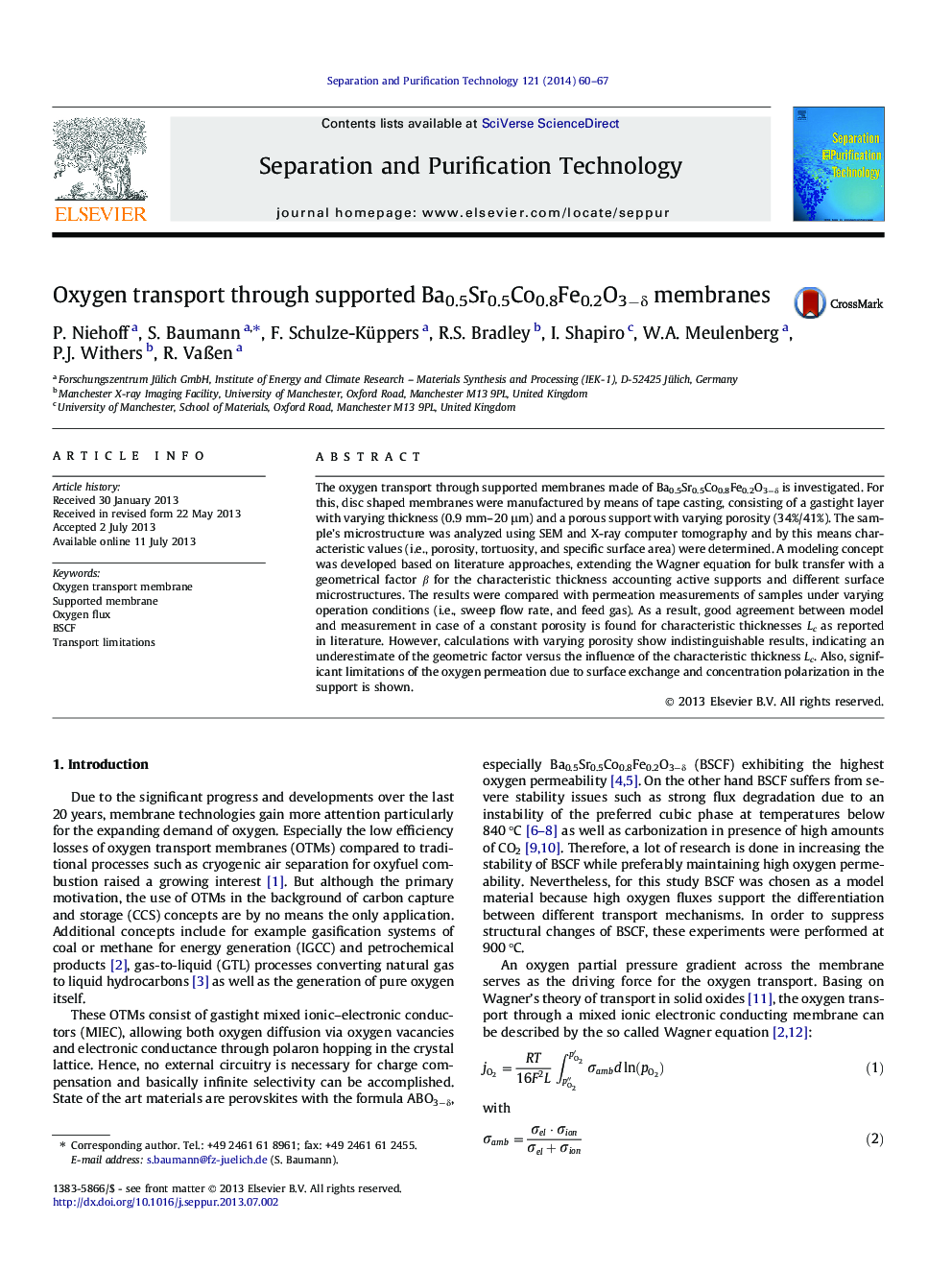| Article ID | Journal | Published Year | Pages | File Type |
|---|---|---|---|---|
| 641422 | Separation and Purification Technology | 2014 | 8 Pages |
•Membrane microstructure was analyzed using SEM and X-ray computer tomography.•Different limitations for the oxygen transport were identified.•The porous substrate has a significant influence on the permeation.•A model approach was developed to account for surface exchange.•The characteristic thickness is the governing factor for modeling oxygen transport.
The oxygen transport through supported membranes made of Ba0.5Sr0.5Co0.8Fe0.2O3−δ is investigated. For this, disc shaped membranes were manufactured by means of tape casting, consisting of a gastight layer with varying thickness (0.9 mm–20 μm) and a porous support with varying porosity (34%/41%). The sample’s microstructure was analyzed using SEM and X-ray computer tomography and by this means characteristic values (i.e., porosity, tortuosity, and specific surface area) were determined. A modeling concept was developed based on literature approaches, extending the Wagner equation for bulk transfer with a geometrical factor β for the characteristic thickness accounting active supports and different surface microstructures. The results were compared with permeation measurements of samples under varying operation conditions (i.e., sweep flow rate, and feed gas). As a result, good agreement between model and measurement in case of a constant porosity is found for characteristic thicknesses Lc as reported in literature. However, calculations with varying porosity show indistinguishable results, indicating an underestimate of the geometric factor versus the influence of the characteristic thickness Lc. Also, significant limitations of the oxygen permeation due to surface exchange and concentration polarization in the support is shown.
